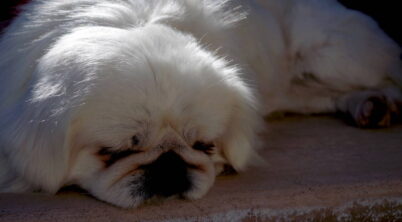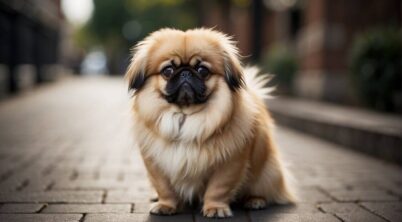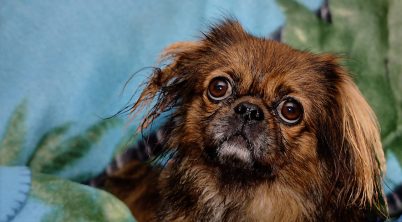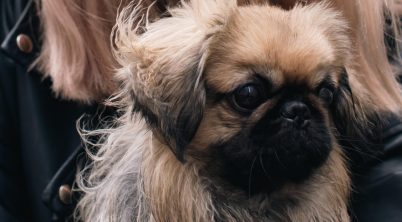Pekingese, a toy breed esteemed for its dignified and independent nature, is often perceived as a serene and composed companion. One of the notable traits of the Pekingese is its tendency to remain tranquil and quiet within indoor environments. Unlike some dog breeds that are known for their high energy levels and vocal tendencies, the Pekingese does not typically require extensive exercise to remain content, which contributes to its more subdued demeanor in the home. This composure also extends to their interactions with strangers, as they are generally polite, though they may carry an air of aloofness reflective of their royal ancestry in ancient China.
The Pekingese may express its vocal side under certain circumstances, such as when sounding the alarm in its role as a watchdog—a task it performs with a surprising volume and tenacity for its size. However, this does not translate to persistent barking or noise-making. A well-socialized Pekingese that has been respectfully trained is likely to be well-mannered, further reducing the incidence of unnecessary noise.
While individual personalities can vary, and some Pekingese might be more prone to vocalize than others, as a breed they are typically not given to excessive barking. Their quiet nature paired with a confident and self-assured attitude makes them a suitable pet for those seeking a less boisterous canine companion.
Table of Contents
Are Pekingese Quiet?
Pekingese dogs, known for their regal and independent nature, typically exhibit a calm and quiet demeanor. They are well-suited to indoor environments due to their gentle presence. Their behavior tends to reflect a tranquil composure rather than a tendency towards excessive noisiness.
Despite their poised manner, socialization plays a crucial role in their interaction with strangers and other animals. A Pekingese that has been properly socialized and respects its owner will likely adhere to a well-mannered temperament without the need for intensive formal training.
Characteristics of the Pekingese Temperament:
- Indoor Behavior: Comfortable and relaxed, causing minimal disturbance.
- Exercise Needs: Relatively low, not requiring vigorous activities to remain content.
- Socialization: Polite with unfamiliar people and typically accepting of other pets.
The suitability of a Pekingese in a household largely depends on the environment. They favor calm settings and might be less fitting in homes with young, energetic children who may disrupt their preference for a serene atmosphere.
In Summary: Their moderate temperament makes them particularly appealing to those living in apartments or seeking a less vociferous pet. However, it is important to remember that individual personalities can vary, and while the breed may generally be quiet, each dog has its unique character.
Temperament and Personality Traits
Pekingese are known for their distinctive and complex temperament, often displaying a blend of dignity, confidence, and affection. They exhibit a range of behaviors from loyal devotion to stubborn independence.
Understanding the Pekingese Temperament
The Pekingese temperament is multifaceted. They are loyal and affectionate companions, eager to spend time with their human family members. Independence is another hallmark of their personality, which sometimes manifests as stubbornness. While they are intelligent, training a Pekingese requires patience as their independent nature can make them resistant to commands. These dogs are not typically high-energy, but they are alert and make excellent watchdogs, often being protective of their home and family.
Despite their small size, Pekingese carry themselves with a dignified and confident air. They regard their environment and those within it with a discerning eye and can exhibit strong devotion to their owners. However, their sensitive nature requires gentle handling to prevent distrust or defensive behavior.
Socialization and Behavior With Strangers
Socialization is crucial for a Pekingese. Early and consistent socialization can help mitigate the breed’s natural wariness around strangers.
With proper introduction, Pekingese can be polite with strangers, though they usually maintain a certain level of detachment. Without appropriate socialization, a Pekingese may become overly protective and reserved around unfamiliar people. Such behavior underscores the importance of exposing them to a variety of people and environments from a young age to foster a more social and amicable temperament.
In interactions with strangers, Pekingese may exhibit quiet confidence. While not overly aggressive, they do not hesitate to alert their owners if they feel something is amiss, always taking their watchdog role seriously.
Care Requirements
In caring for a Pekingese, attention to grooming and exercise needs is essential for their overall well-being and to prevent common health issues.
Grooming Essentials
A Pekingese’s coat requires regular grooming to remain in good condition. They possess a double coat that can be lengthy and prone to shedding. To manage their coat, owners should:
- Brush their Pekingese’s coat several times a week to prevent matting and reduce shedding.
- Trim the coat as necessary, especially around the paws to prevent debris accumulation.
- Schedule baths every few weeks, being careful to dry the coat thoroughly to avoid skin issues.
Attention to the feathering on the legs and tail is also important, as these areas can easily become tangled. Regular grooming helps in identifying potential health problems such as patellar luxation and intervertebral disc disease early by noticing any sensitivity or discomfort during grooming sessions.
Exercise and Activity Levels
Pekingese have moderate exercise needs. They are generally a quiet breed that does not require extensive physical activity but must be kept active to avoid obesity and associated health issues. The following should be incorporated:
- Daily walks are recommended, typically two walks of around 15 to 20 minutes.
- Play sessions, either indoors or in a yard, provide mental stimulation and physical activity.
- Owners should be aware of their susceptibility to health issues like patellar luxation, which can be exacerbated by jumping or rough play.
- Exercise should be modified if the dog shows any signs of health problems.
By strictly adhering to these care requirements, one can help their Pekingese lead a healthy, active life.
Training and Companionship
Training a Pekingese requires a firm yet gentle approach, while companionship is essential to their contentment, given their sociable nature.
Effective Training Techniques
The Pekingese, though smart, can exhibit a stubborn streak, which necessitates consistent and patient training methods. Positive reinforcement is key, rewarding desired behaviors with treats or praise to encourage repetition. It’s vital to establish clear leadership to gain their respect without resorting to harsh discipline. Here are some techniques that can be effective:
- Consistent Commands: Use the same words for each command to help them learn.
- Short Training Sessions: Keep sessions brief to maintain their attention.
- Early Socialization: Expose them to various people, pets, and environments early on to foster a well-adjusted temperament.
The Pekingese as a Family Companion
Renowned for their loyalty, Pekingese make excellent companions that thrive in family environments. They are typically friendly and have a regal air that adds to their charm. However, their suitability for apartment living is notable due to their moderate exercise needs. Achieving a harmonious household presence involves:
- Socialized Companions: Introduce the Pekingese to family members and other pets gently to ensure they become socialized and comfortable.
- A Quiet Resting Area: Provide a tranquil space for rest, as they are calm indoors.
- Mental Stimulation: Offer interactive toys and games to keep them mentally engaged, which is important for toy breeds.
Engaging the Pekingese in regular training exercises and solidifying their status as treasured family members will lead to a well-rounded and content companion.
Health and Lifespan
The Pekingese breed faces particular health challenges yet can enjoy a long life with proper care. Owners should be vigilant about breed-specific issues while cater to their pet’s overall well-being.
Common Health Concerns
The Pekingese is known for certain health issues that prospective owners must consider. Their brachycephalic nature, characterized by a flat face and short nose, can lead to breathing difficulties and overheating. Common conditions include:
- Patellar Luxation: Dislocation of the kneecap can cause lameness or irregular walking.
- Intervertebral Disc Disease: This breed is prone to spinal problems due to their long backs, which can lead to pain and paralysis.
- Eye Problems: Their large, prominent eyes are susceptible to ulcers and scratches.
- Dental Issues: With a small muzzle, teeth overcrowding can lead to decay and disease.
- Snoring: Due to their brachycephalic airways, snoring is common.
- Obesity: A sedentary lifestyle can exacerbate health problems and obesity is a concern.
Proper screening by a reputable breeder and regular veterinary care can mitigate many of these concerns.
Expected Lifespan and Care Advice
Lifespan: The Pekingese typically enjoys a lifespan of 12 to 15 years. Factors contributing to this longevity include genetics, quality of life, and access to appropriate health care. To support their well-being, consider the following advice:
- Routine Health Checks: Regular check-ups with the vet to catch and address problems early.
- Diet Management: A balanced diet to maintain ideal weight and prevent obesity.
- Eye Care: Keeping the eyes clean and monitoring for any signs of irritation or injury.
- Exercise: Moderate but regular exercise tailored to their capacity to avoid stress on their bodies.
By adhering to these guidelines, owners can help their Pekingese navigate health issues for a fulfilled and maximized lifespan.
* Banner photo by Enrique A Sanabria, cropped | Some rights reserved








